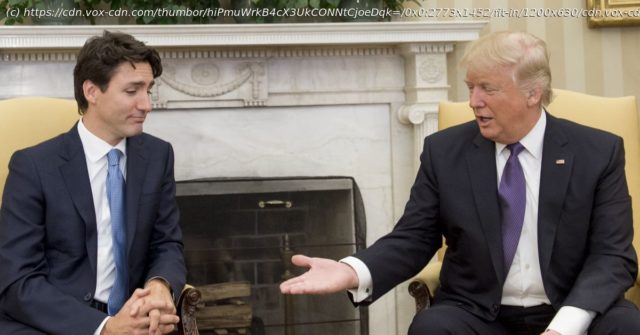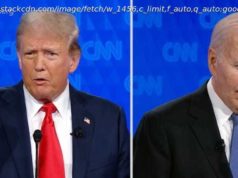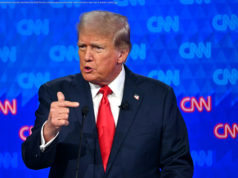Canada beat the US on coronavirus because its political system works.
Canada and the United States are, in many respects, similar countries. With the coronavirus outbreak, the two North American nations had comparable risk profiles, sharing (for example) similarly aged populations and similar distance from the earliest hotspots in Europe and East Asia.
Yet the outbreak has been dramatically worse in the United States than its northern neighbor.
Per capita, the United States has about twice as many confirmed coronavirus cases as Canada and about 30 percent more deaths. Canadian testing rates have been consistently higher, especially during the critical early stages of the North American outbreaks: In mid-March, the Canadian testing rate was roughly five times higher than the American one.
To explain this divergence, I spent the last week speaking with Canadian public health experts who had been following the situation in the two countries closely. These experts varied in their take on their own country’s performance during the pandemic, assessments ranging from middle of the pack by global standards to one of the very best in the world.
But they all shared the same view of the difference between the United States and Canada: the Canadian policy response has been orders of magnitude better than the American equivalent.
“We have a federal government that is supporting provinces’ responses,” says David Fisman, an epidemiologist at the University of Toronto. “You have a chief executive who is directly undermining the public health response.”
There are a number of factors that have enabled Canada to perform at a higher level than the United States, including more consistent pre-virus funding for public health agencies and a universal health care system. But one of the most important seems to have been a difference in political leadership.
The American response has become infected by partisan politics and shot through with federal incompetence. Meanwhile, Canada’s policies have been efficiently implemented with support from leaders across the political spectrum. The comparison is a case study in how a dysfunctional political system can quite literally cost lives.
The Canadian approach has not been perfect. Its death rate is currently much higher than best-in-class performers like Germany and South Korea; Canadian officials have fallen down, in particular, when it comes to long-term senior care and the indigenous population. But given the interdependence between these two large neighboring economies, Canadians are not only vulnerable as a result of their own government’s choices — but also because of their southern neighbors’ failures.
“The biggest public health threat to Canada right now is importing cases from the United States,” says Steven Hoffman, a political scientist who studies global health at York University.
The easiest way to see the divergence between the two countries is to look at this chart of per capita cases across the epidemic, courtesy of Our World in Data:
You can see in the data that cases began to tick up in the two countries at roughly the same time. But in March, the American caseload spikes significantly higher and faster than the Canadian equivalent, indicating greater Canadian success at “flattening the curve.” Through early May, the Canadian numbers remain consistently and significantly lower.
The most immediately visible reason for this divergence has been the choices made by each country’s political leadership.
Throughout the crisis, Prime Minister Justin Trudeau has taken a consistent stance that the virus is a serious threat that requires a strong federal response. In mid-March, Trudeau’s wife Sophie Grégoire tested positive — causing the prime minister himself to enter strict self-isolation well before mandatory distancing became part of everyday life. He took over parenting duties from his sick wife and conducted socially distanced press briefings from his front lawn. Since his wife’s recovery, Trudeau has been consistently emphasizing the need for Canadians to stay the course and remain distanced — unlike his counterpart in the White House.
Of course, such rhetoric would seem like a performance if not backed up by actual policy. But the Trudeau government has won high marks from experts when it comes to core federal responsibilities. Two clear points of contrast with the US are personal protective equipment (PPE) and testing.
In Canada, the federal government has served as a centralized hub of PPE purchases — buying supplies in bulk and distributing them to the country’s provinces on the basis of need. In the United States, the federal government’s efforts in this area have been haphazard and marked by political favoritism.
Maryland Governor Larry Hogan is currently hiding thousands of coronavirus tests, purchased from South Korea, in an “undisclosed location” protected by the National Guard. Hogan, a Republican Trump critic, is worried that the federal government might seize them. After the federal government seized 500 ventilators requested by Colorado’s Democratic governor, Trump sent 100 back to the state — crediting them to Sen. Cory Gardner, a Republican up for reelection in 2020.
Canada was ahead of the North Curve curve on testing because its federal government once again made the right choices. In mid-March, Canadian federal authorities launched a large-scale testing procurement program aimed at ensuring the country could test early and often. By contrast, Trump put his unqualified son-in-law, Jared Kushner, in charge of the country’s testing ramp-up.






